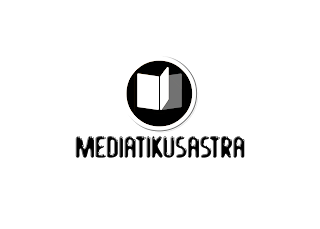TEORI: Psychoanalysis
Februari 22, 2020A REVIEW OF PSYCHOANALYSIS LITERARY CRITICISM
Oleh: Muhammad Alif Faturrachman
(Founder Mediatikusastra)
Being a part of human history along with the
development of human languages, literature cannot be separated from many other
fields of study. Moreover, literature itself has intertwined with many other
fields such as sociology, history, philosophy, psychology, and many other
fields (Goksen, 2014). Therefore,
through those complex relations, it is possible to correlate literature
criticism with other fields wherein languages are being used as the primary medium
of those fields of study. In addition to the relationship between literature
and other fields such as psychology through the use of languages, it is also
acknowledged that literature is a part of human expressions, therefore, it
represents human life. As such, literature can be studied using psychological
perspectives (Endraswara, 2011).
In order to gain a better
understanding of literature and psychology relation, Wellek and Warren
(1970:81) in the Theory of Literature
stated that psychology of literature means the psychological study of the
writer as type and individual, or the study of creative process or study of
psychological types and laws present within work of literature, or finally the
effect of literature upon the readers (audience psychology). Therefore, based
on Wellek and Warren’s statement, the psychological perspective could be
applied to analyze the psychological aspects of the writer, the character
within the literary works, and also the readers of the works. As a result,
this definition strengthens the claim that both literature and psychology are
related to each other as it reflects human life by the way it describes human
feeling, imagination, thought and views through the mean of written narration.
Albeit the matter of whether the said literature is a fiction or non-fiction
works, it does reflect on human and society psychology as a whole personal or
collective mind within the literary works that can be studied through the
psychoanalytic criticism theory based on many psychoanalysis methods such as
Freud’s psychoanalysis method.
The concept of psychoanalysis was
initially proposed by Sigmund Freud in 1896 and also initially used as a method
of therapy medication. Freud began his psychoanalytic work in the 1880s while
treating his patient that suffers from the behavioral disorder. He nicknamed
the behavior disorders as 'hysteria' and began treating the victim of hysteria
by listening to the patients talk through their problems. Based on this experiment,
Freud proclaims that people's behavior is influenced by their unconscious as he
believes that human beings are motivated, even driven, by their desires, fears,
needs, and conflicts of which they are unaware (Tyson, 2006). In addition,
according to Freud, human personality is complex and consists of more than a
single component. In his well-known theory of personality, Freud stated that
the human mind is divided into three components which he refers to as “the
physic apparatus” (Freud, 1923).
The first component in Freud’s theory
is known as the Id, this component
resides within our unconscious mind from the time of our birth. this aspect of
personality is completely unconscious and includes the basic instinct and
primitive behavior. The second component is widely known as the Ego, this component also lives
within our mind, specifically our conscious mind and acts as the one
responsible for our behavior to deal with the reality around us. Freud also
stated that this part is also developed from the Id and responsible to repress
the Id in order to follow the acceptable manners and norms in reality. While
the last one is known as the Superego, this component presents within our mind,
specifically on our unconscious mind. Superego is the aspect of personality that
holds all of our internal moral standards and the ideal that we receive from
both parents and the society present that developed our sense of right or wrong
that guides us in judgment making. (Cherry, 2019). Therefore, these concepts
of human psychology components work together to create complex human behaviors
that led to the creation of Psychoanalytic Criticism theory as a tool to
analyze the psychology within the literary works based on Freud’s
psychoanalysis theory.
REFERENCES
Berger, Peter. Psychoanalytic Criticism, London: Sage
Publication, 2004.
Cherry, Kendra. Freud’s Id, Ego, and Superego, Web. 03 October
2019,
Endraswara, S. Metodologi Penelitian Sastra. Yogyakarta: CAPS, 2011.
Freud, Sigmund. The complete
introductory lectures on psychoanalysis, trans. James Strachey. New York:
W.W. Norton. 1996.
Freud, Sigmund. The origin and development of psychoanalysis’ The American Journal of Psychology, Vol 21, no.
2, pp. 181-218. 7 December 2014. Web. <www.jstor.org/table/1413001>
Wellek, R, Warren, A, Literary Theory, trans. M Budianta. Jakarta: Gramedia 1989.
Muhammad Alif Faturrachman kerap disapa dengan panggilan “Alif”, “Alep”, “Toad” adalah seorang pemuisi amatiran serta salah satu Founder dari Mediatikusastra. Ia memiliki passion di bidang desain grafis dan komputer dengan jejak rekam petualangan sebagai lulusan “terbaik” dari SMK Negeri 1 Sungailiat, sebuah gelar yang sengaja ia klaim sepihak agar terdengar prestis. Kini, takdir membawa Alif ke jurusan Sastra Inggris di sebuah universitas negeri di Indonesia, dimana ia harus meninggalkan mimpi menjadi seorang game developer atau seorang desainer grafis dan apalah itu mimpi-mimpi yang pernah ia impikan.
BIODATA PENULIS
Muhammad Alif Faturrachman kerap disapa dengan panggilan “Alif”, “Alep”, “Toad” adalah seorang pemuisi amatiran serta salah satu Founder dari Mediatikusastra. Ia memiliki passion di bidang desain grafis dan komputer dengan jejak rekam petualangan sebagai lulusan “terbaik” dari SMK Negeri 1 Sungailiat, sebuah gelar yang sengaja ia klaim sepihak agar terdengar prestis. Kini, takdir membawa Alif ke jurusan Sastra Inggris di sebuah universitas negeri di Indonesia, dimana ia harus meninggalkan mimpi menjadi seorang game developer atau seorang desainer grafis dan apalah itu mimpi-mimpi yang pernah ia impikan.









0 komentar